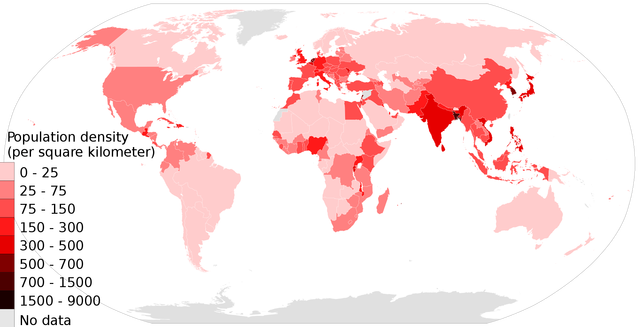32+ What Does Population Dispersion Mean In Geography
Dispersion or variation may be defined as a statistics signifying the extent of the scatteredness of items around a measure of central tendency. Places which are densely populated contain many people.

Physical And Human Factors Affecting Global Population Distribution Geography Myp Gcse Dp
Population - Population - Geographical distribution and urbanization.

What does population dispersion mean in geography. Places which are sparsely populated contain few people. The typical measure of population in relation to land area that of population density is often a meaningless one since different areas vary considerably in their value for agricultural or other human purposes. Population Distribution Population distribution means the pattern of where people live.
It is the study of the ways in which spatial variations in the distribution composition migration and growth of populations are related to the nature of places. Population density is a measure of the number of organisms that make up a population in a defined area. These are usually places with hostile environments eg.
Dispersion or variation is the measurement of the scatter of the size of the items of a series about the average. Places which are densely populated contain many people. World population distribution describes how people are spread out across the globe.
Population density is typically expressed as the number of persons per square kilometer km2 or square mile mi2. World population distribution is uneven. Population density applies to all organisms on Earth including the plants that make up vast.
Population distribution means the pattern of where people live. Population geography deals with geographical distribution of population and geographical variation in population related indicators including demographic parameters. Population geography is a branch of human geography that is focused on the scientific study of people their spatial distributions and density.
World population distribution is uneven. This is a measure of variability and it indicates the spread of values around the mean as a percentage and it allows us to compare easily the spread of values between two different data sets with the same mean and shows the information by methods such as choropleth mapping. Population distribution can be measured across the entire world or a smaller region within a country or continent.
Sparsely populated places tend to be difficult places to live. Properties of a good measure of Dispersion. Dispersion or distribution patterns show the spatial relationship between members of a population within a habitat.
It is a way of measuring population distribution and shows whether an area is sparsely or densely populated. Many of the things geographers study are found in some places but not in the others. Individuals of a population can be distributed in one of three basic patterns.
To study these factors population geographers examine the increase and decrease in population peoples movements over time general settlement patterns and other subjects such as occupation and how people form the geographic character of a. Distribution refers to the way something is spread out or arranged over a geographic area. Few people live in locations that are sparsely populated and densely.
Population density is the average number of people per square kilometre. Population geography involves demography in a geographical perspective. Uniform random or clumped.
McGraw-Hill Dictionary of Scientific Technical Terms 6E Copyright 2003 by The McGraw-Hill Companies Inc. Demography on the other hand is the study of population including inter relationships between various parameters - demographic economic social and cultural. Spatial distributions can be quite large such as an entire continent or ocean or quite small such as a patch of ground in a forest.
The concept of distribution can be applied to nearly everything on Earth from animal and plant species to disease infections weather pattern s and man-made structures. Freebase 300 3 votesRate this definition. Places which are sparsely populated contain few people.
Spatial distribution describes how spread out a population is what area it occurs in while population density describes how many individuals are found in a given area. The human population is not spread evenly. Päpyəlāshən dispərzhən biology The spatial distribution at any particular moment of the individuals of a species of plant or animal.
Sparsely populated places tend to be difficult places to live. In other words population distribution shows where people live. Population distribution is a term that is used to describe how people are spread across a specific area.
It goes without saying that populations are scattered across space. Population geography is a division of human geography.
